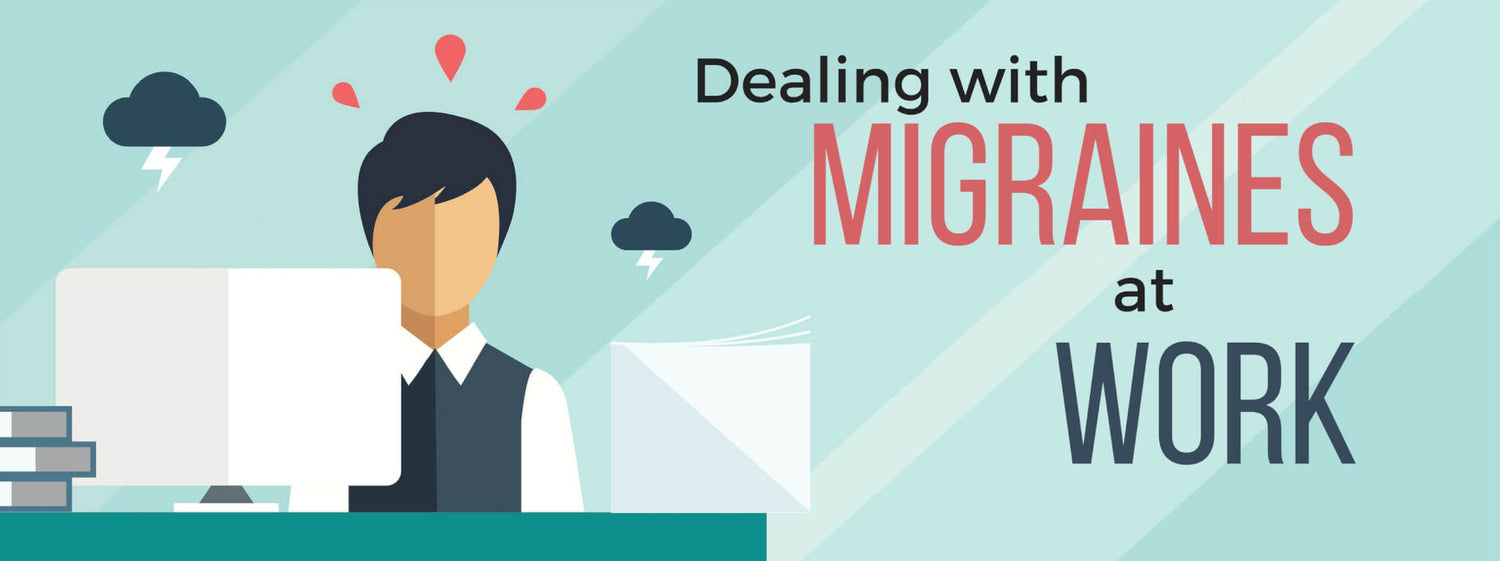Migraines can be triggered by a number of external factors. As a migraine sufferer, you can reduce your likelihood of an attack by limiting your exposure to these triggers; but when it comes to controlling your surroundings that’s usually easier said than done.
Controlling your environment is difficult in public settings, especially in the workplace. When you’re at work, you’re susceptible to a variety of workplace stressors.
- Many offices have harsh fluorescent lighting
- Hours of staring at a computer screen
- Coworkers may wear strong-smelling perfumes
- Food or drinks that trigger a migraine
One of the most prevalent and hard-to-control triggers in the workplace is light sensitivity, but that doesn’t mean you’re powerless when it comes to managing this trigger.

Light Sensitivity at Work
Light sensitivity, or photophobia, affects each person differently. Migraine sufferers may experience sensitivity to different wavelengths of light, patterns of light and may be more sensitive to light during one season versus another. Despite the uniqueness of light sensitivity there are some consistencies:
- Exposure to light can dramatically increase the amount of pain and discomfort you are experiencing during a migraine headache.
- People who are photophobic are sensitive to light even when they’re between migraines.
- Blue and green wavelengths of light are associated with increased sensitivity and pain.
- Fluorescent lights, computer screens and other indoor lighting are some of the most common trigger sources.
For migraine sufferers with light sensitivity, most workplace settings are problematic. So, how can you limit your exposure to light in the workplace and control your migraine headaches?
Limiting Sensitivity to Light at Work
Controlling the amount or type of light in your workplace is not always an option. Nonetheless, there is an individual solution for controlling your exposure to workplace lighting with precision tinted lenses.
Not all glasses are created equal when it comes to reducing the exposure to light that causes migraines. In fact, if you wear regular black sunglasses indoors you may actually increase your sensitivity to light. Dr. Kathleen Digre, MD, professor of ophthalmology and neurology at the University of Utah, says that, “People who wear dark glasses can actually dark-adapt themselves and increase their photosensitivity. Sunglasses outside, of course, are fine, but the darker the glasses inside, the more light-sensitive the person will become.”
Instead, migraine sufferers should opt for specially-tinted glasses, which are proven to block out the wavelengths of light implicated in aggravating migraine. Light sensitivity lenses are a cost-effective and noninvasive solution for coping with light sensitivity in the workplace.
Other proven methods for reducing your susceptibility to migraines in the workplace, even those caused by light sensitivity, include implementing an exercise program or a relaxation technique into your daily routine.
A randomized study revealed exercise and relaxation techniques to be just as effective as medication for reducing the frequency of migraines. Adult participants in the study implemented either 40 minutes of exercise three times a week or incorporated daily relaxation techniques, such as meditation. During the study’s three-month period, the exercise group saw a 93 percent decrease in migraine attacks while the relaxation group saw an 83 percent decrease.
Even though you can’t completely eliminate your sensitivity to light in the workplace, these methods can be your simple solution for controlling your exposure to light and susceptibility to migraines.





